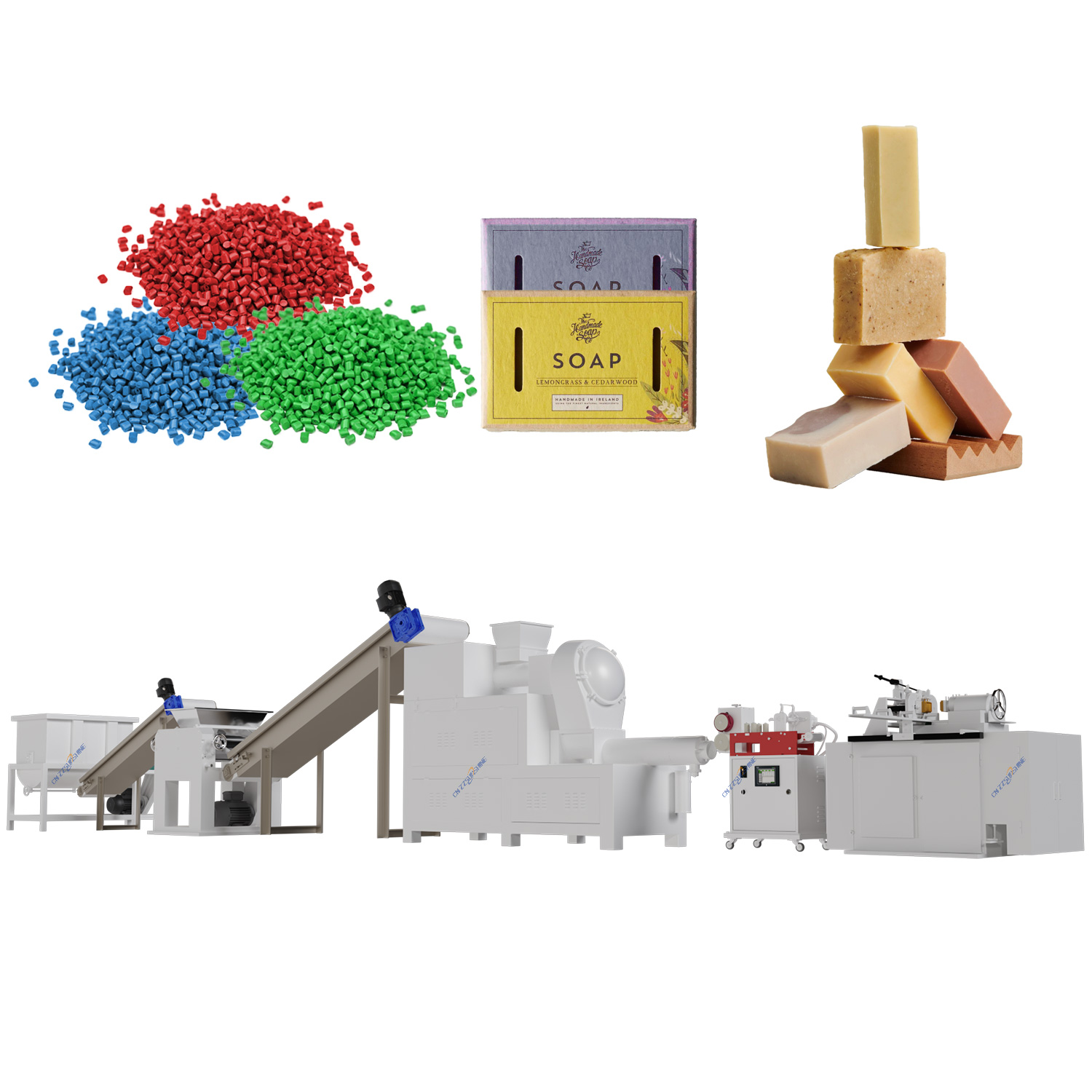Scaling soap manufacturing efficiently demands integrated solutions. A modern **automatic soap production line** seamlessly combines essential processes – from mixing base materials to forming finished bars – significantly boosting output while controlling costs. This integrated approach is the backbone of successful **laundry bar soap production line** and **toilet soap finishing line** operations.
The core process begins with the **soap mixer** or **mixing machine**. This critical component ensures uniform blending of fats, oils, alkalis, additives, and recycled soap noodles under controlled conditions. Consistent mixing is paramount for quality, whether producing simple laundry bars or complex **beauty soap making line** products.
Next, the blended soap mass moves to the **soap plodder**, often a **vacuum plodder**. This machine compacts the mixture under vacuum, removing trapped air which prevents crumbling and ensures bar hardness. The **vacuum plodder** stage is crucial for achieving the dense, smooth texture consumers expect, especially in high-end **toilet soap finishing line** setups. The extruded continuous log of soap then requires precise cutting.
Here, the **custom soap cutting machine** or **electric washing soap cutter** takes over. These cutters slice the soap log into individual bars with exceptional accuracy and minimal waste. Customization options allow for various bar sizes and shapes, essential for brands with unique product specifications within their **bath soap making machine** operations. Sharp blades and stable mechanics are key for clean cuts every time.
Integrating these components – the **soap mixer**, **soap plodder**, and **cutter** – into a single, synchronized **automatic soap production line** delivers substantial advantages. It minimizes manual handling, reduces labor costs, ensures consistent product quality batch after batch, and maximizes throughput. Factories benefit from higher production capacity, whether running a dedicated **laundry soap making line** or a flexible setup handling multiple product types. The return on investment comes from reduced operational expenses and the ability to reliably meet larger market demands. For manufacturers aiming to compete effectively, investing in a robust, automated line isn’t just an upgrade; it’s a strategic necessity.




